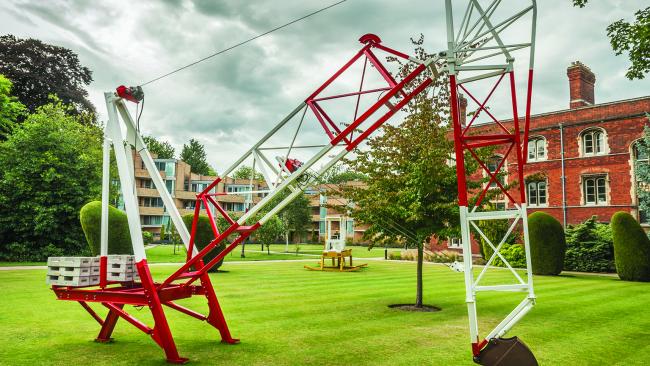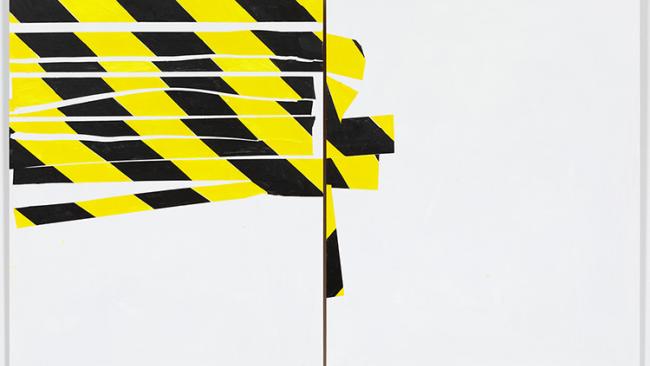
James Capper
Works exhibited: Ripper, Tread Toe.
After the classification of plants and animals into species, genus, family, class, and order, there was James Capper.
Capper’s work involves the development of a taxonomy to differentiate between machines that have been altered into sculptures through the replacement of wheels and tracks with feet, or the substitution of shovels with teeth or claws; their extremities are not simply extensions but prehensile and articulate.
The result in each case is a hybrid that does not relate to its surroundings in a utilitarian way but which behaves in a self-defining fashion: it does not dig, move earth or remove obstructions, but makes its own marks on the ground, writes upon it; dances, traces patterns.
Of the four ‘divisions’ of Capper’s art that encompass his work so far – the ‘Offshore’ division, the ‘Carving’ division, the ‘Material Handling’ division, and the ‘Earth-Marking’ division – the two works in the present exhibition belong to the last of these categories.
Tread Toe is an unsettling mixture of properties – it is robust, practical and purposeful in repose, but once activated becomes awkward, ponderous, even precarious. Like a child in the first stages of learning to walk, it has a vulnerability, an uncertainty of movement, that prompts an empathetic response.
Each of these reimagined machines possesses a cab that each of us could occupy as driver or handler, but as sculptures they invite us to occupy them as familiar spirit, as the sensibility or imagination that would feel at home in this peculiar ensemble of movements, as the ghost in this particular machine. If Tread Toe seems to be haunted by the memory of certain ways of moving, it is because we are the ones who haunt it.
Each of Capper’s sculptures is a fresh adaptation, a variant on a type suggested by the basic kit of elements it shares with its closest relative in the world of industrial design. But that variation is what turns it away from the industrial principle of reproduction and gives each of these constructions its own aura, its own signature as product not of the assembly line but of the imagination.
A work like Ripper can be set in motion to resemble an extravagant and hyperbolic form of rotavator, but its action is more expressive than efficient, more aesthetic than cost effective, and its originality of structure is much more an experiment in form pursued for its own sake than a technical innovation for the sake of improved performance.
Industrial tools are ultimately prostheses of the human body, while Capper’s practice is an extension of the sculptural tradition that studies the anatomical body as the basis of scale and proportion in the invention of artistic form.
















